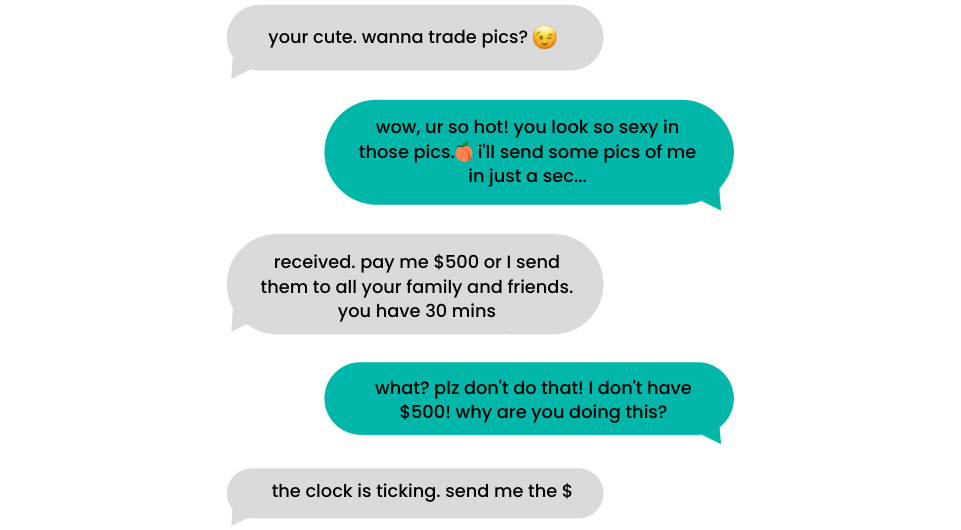Revenge porn and image-based abuse
‘Revenge porn’ is a type of image-based abuse that can happen online. ...
READ ME‘Sextortion’ is a type of image-based abuse that can happen online. If you experience sextortion, there are things you can do and people who can help.

It’s normal to be curious about sex and your sexuality, and to want to explore and experiment with it.
Sexting is becoming more and more common – but there are some challenges you need to be aware of, things you can do to stay safe, and people/places that can support you if things go wrong.
Remember, if someone asks you for nude or sexual images/videos, “No” is always an acceptable answer, no matter what. It’s not ok for someone to pressure you to send this type of content – and anyone who genuinely cares for you will be ok with your “NO”.
Did you know? Intimate images/videos can be more easily used to abuse you if they clearly show your face, show identifying things like tattoos or birthmarks, or have identifying backgrounds (e.g. a jumper with a school logo on it in the background).
‘Sextortion’ or 'sexual extortion' is a form of blackmail where someone tricks or pressures you into sending sexual images of yourself and then threatens to share the images unless you comply with their demands. Usually, these demands are for money, more images/videos, or sexual activity from you that you hadn’t offered or didn’t want to engage in.
Some examples of online sextortion includes:
Sextortion is a crime. Catfishing, grooming, threatening and blackmailing are all examples of inappropriate and harmful behaviours online.
Did you know? Sextortion can be an ‘organised crime’ where people pretend to be an attractive young person online to get sexual images/videos from young people and then blackmail them. This can occur in a structured way and with the intent of making money from you and other children and young people.
All ages - Report it to the platform/app/site it’s happening on as a first step – they generally have rules against sextortion and will take action to remove any content, and remove/block the people/accounts who are trying to sextort others. For guides on how to report to different platforms, view the eSafety Guides. These guides also provide advice on how to stay safe on platforms like Snapchat, Facebook, Instagram and more.
Under 18s - Report to the Australian Centre to Counter Child Exploitation (ACCCE) where law enforcement officers work to protect children from online child sexual abuse.
Over 18s - You can report to ReportCyber. If you've reported to the platform/app/site and the platform doesn't help, you can also report to eSafety.
If you need any support, or help reporting, get in touch with Kids Helpline!
Revenge porn and image-based abuse
‘Revenge porn’ is a type of image-based abuse that can happen online. ...
READ MESexting
If you own a smartphone you’ve probably heard of sexting. It’...
READ MECyberbullying
If you’re experiencing cyberbullying, you’re not alone. It can be ...
READ MEWhat is abuse
Abuse takes many forms and there isn’t one single way that ...
READ METalking helps! We’re here for you.
No problem is too big or too small.
We're here 24 hours a day, 7 days a week